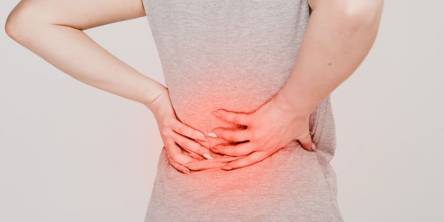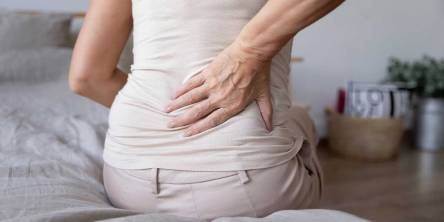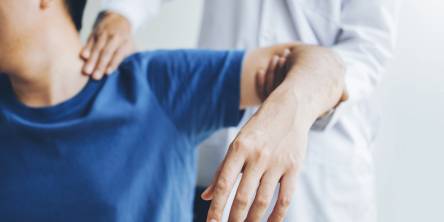5 Safe Ways to Lessen Hip Pain
Your hip joint is incredibly sturdy and solid. Of all the several types of joints in the body, ball-and-socket joints offer the most range of motion. The muscles that cover the hip joint and the tendons that attach them to the bones keep the joint from dislocating. These tendons and muscles surround the joint and provide stability for movement. They support the joint's movement while allowing you to move your legs and upper torso.
The synovium, located inside the capsule, lubricates the joint with synovial fluid and maintains the cartilage's health. Your hip joint's cartilage rests between the bones to prevent them from rubbing against one another and to lessen any impact when you walk or move your hip. But in some cases, you can experience pain, when something goes wrong. Here are some safe ways to lessen hip pain.
1. Flushing and injections
To relieve your discomfort, some medicines can be injected right into your hip. Anti-inflammatory corticosteroids are among these. Infusion therapy reduces inflammation by injecting drugs intravenously or directly into the muscles. Additionally, pain management doctors provide platelet-rich plasma (PRP) injections, which speed up tissue regeneration, treat injuries, and restore cartilage by using your own blood's platelets.
2. Don't delay: shed pounds
Your hips and knees are put under an additional 50 pounds of pressure for every 10 pounds of additional body weight you carry. Find a weight that suits you and see your doctor about the best strategies to lose weight if your joints are feeling the pressure. Losing additional weight may help and make it simpler to walk around, depending on what is causing your hip pain.
3. Physical and hydrotherapy
In order to promote blood flow throughout the body, hydrotherapy uses pressure and warmth. It is a type of physical rehabilitation. This can ease hip discomfort. Patients with arthritis, strains, rips, tendinitis and other less serious hip issues can also benefit from standard physical therapy treatments for the reduction of hip discomfort.
4. Gentle workouts with little impact
Eat well and maintain a moderate level of activity to prevent hip problems. Exercises including jogging, swimming, stretching, and resistance training might ease arthritis-related chronic hip discomfort. Although it may seem contradictory, building stronger leg muscles can be quite helpful in reducing hip pain. With little stress on the hips, these exercises help to strengthen the muscles in the legs. You can give better support, put less strain on your joints, and diminish or eliminate discomfort if your muscles are stronger.
Hip stretches and exercises can assist to strengthen muscles, reduce pain, and improve mobility. There are a variety of workouts to pick from, but individuals can experiment to determine which ones are most effective for them before incorporating them into a regimen. You might also create a customized fitness program with the help of a physical therapist. It is clear, that you should see a doctor if your hip pain is severe, chronic, or getting worse. Exercises that cause or aggravate hip pain should be stopped or reduced.
5. Pain reliever MSM
The body naturally makes the sulfide methyl-sulfonyl-methane (MSM). It might be able to help those with hip pain feel less discomfort. MSM is generally risk-free. It improves the passage of damaging substances out of the cells and stops pressure from building up inside the cells, which results in joint inflammation. The most common application of MSM is as an anti-inflammatory for arthritic hip and joint discomfort.
MSM is produced by the body, but there is also extra MSM in foods including milk, meat, vegetables, fruit, and seafood. However, getting the required amount can be challenging given the prevalence of processed meals. Levels of MSM can also be decreased by aging, cleaning, and steaming food.
Similar Articles
Despite the name, don’t worry, heartburn has nothing to do with your heart. Rather, it's a burning feeling in your esophagus, which is the 10-inch tube that connects your mouth and stomach.
Numerous natural cures for back pain can help you minimize your pharmaceutical use or supplement your current medical treatment. Here are some of the natural pain-relieving strategies to see which one works best for you.
Cycling is more than just a sport or a leisure activity; it's a way of life for many. Whether you're an avid cyclist or use your bike for transportation, there's a lot to love about this two-wheeled mode of getting around. But with great rides come great responsibilities, particularly when it comes to safety.
Have you observed any changes in your movement, speech, or thinking? If this is the case, you may wonder if the changes need a visit to a neurologist. A neurologist is a doctor who diagnoses and treats disorders affecting the brain, spinal cord, and nerves
Lower back pain is a common and often severe issue that affects millions of individuals throughout the world. While many of us have dealt with lower back pain at some point in our lives, there are a few interesting facts about this illness that you may not be aware of. In this article, we'll delve into seven intriguing and lesser-known facts about lower back pain, shedding light on its causes, impact, and potential solutions.
According to the American Association of Neurological Surgeons, approximately 75%-85% of Americans have back discomfort at some point in their lives. Upper back pain is commonly caused by small injuries such as muscle strain, sprain, bad posture, inappropriate lifting, or twisting, although it is not always caused by a herniated disc.
When it comes to the most common basketball injuries, some are widespread for players of all ages and ability levels, while others are only seen at the highest levels.
When you think about sports injuries, you generally think of football, basketball, or soccer. All three of these sports demand players to put their bodies on the line regularly. Contact is widespread, and tackling is an essential component of the game of football.
In the fast-paced world of healthcare, OBGYN practices face numerous challenges, from providing quality patient care to managing complex billing processes. As medical professionals strive to focus on patient well-being, the administrative burden of billing and coding can be overwhelming.









